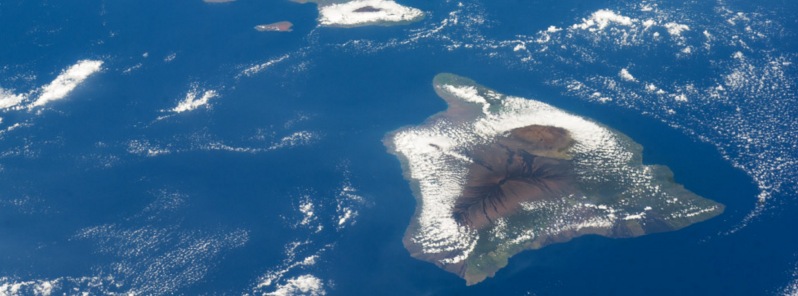Island basalts hold answers to volcanic rocks journey

The journey for volcanic rocks found on many volcanic islands began deep within the Earth. Brought to the Earth's surface in eruptions of deep volcanic material, these rocks hold clues as to what is going on deep beneath Earth's surface. A group of current and former researchers at Arizona State University (ASU) conducted studies of rocks on certain volcanic islands, known also as island basalts and revealed that although these erupted rocks originate from Earth's interior, they are not the same chemically.
According to the researchers group at ASU, the key to unlocking this complex, geochemical puzzle rests in a model of mantle dynamics consisting of plumes – upwelling's of abnormally hot rock within the Earth's mantle – that originate in the lower mantle and physically interact with chemically distinct piles of material. Researchers revealed that this theoretical model of material transport can easily produce variability chemically at hotspot volcanoes, such as Hawaii, around the planet.
"This model provides a platform for understanding links between the physics and chemistry that formed our modern world as well as habitable planets elsewhere," says Curtis Williams, lead author of the study whose results are published in the November 24 issue of the journal Nature Communications.
Basalts collected from ocean islands such as Hawaii and those collected from mid-ocean ridges (that erupt at spreading centers deep below oceans) might look similar to the naked eye, however, in detail, their trace elements and isotopic compositions can be quite distinct. These differences provide valuable insight into chemical structure and temporal evolution of Earth's interior.
"In particular, it means that the Earth's mantle – the hot rock below Earth's crust but above the planet's iron core – is compositionally heterogeneous. Understanding when and where these heterogeneities are formed and how they are transported through the mantle directly relates to the initial composition of the Earth and how it has evolved to its current, habitable state," said Williams, a postdoc at UC Davis.
While a graduate student in ASU's School of Earth and Space Exploration, Williams and faculty members Allen McNamara and Ed Garnero conceived a study to further understand how chemical complexities that exist deep inside the Earth are transported to the surface and erupt as intraplate volcanism, such as that which formed the Hawaiian Islands. Along with fellow graduate student Mingming Li and Professional Research Associate Matthijs van Soest, the researchers depict a model Earth, where in its interior resides distinct reservoirs of mantle material that may have formed during earliest stages of Earth's revolution. Such reservoirs employed into their models is supported by geophysical observations of couple, continent-sized regions – one under the Pacific Ocean and one under under parts of Africa and Atlantic Ocean – which sits atop the core-mantle boundary.
"In the last several years, we have witnessed a sharpening of the focus knob on seismic imaging of Earth's deep interior. We have learned that the two large anomalous structures at the base of the mantle behave as if they are compositionally distinct. That is, we are talking about different stuff compared to the surrounding mantle. These represent the largest internal anomalies in Earth of unknown chemistry and origin," said Garnero.
Chemically distinct regions also underlie a majority of hotspot volcanism, through hot mantle plumes from the top of the piles Earth's surface, indicating a potential link between ancient, chemically distinct regions and the chemistry of hotspot volcanism. Testing model's validity, Williams and coauthors compare their predictions of variability of the ratios of helium isotopes (helium-3 and helium-4) in plumes observed in ocean basalts. 3He is a primodial isotope found in the Earth's mantle. It was created before the Earth was formed and is thought to have become trapped within the Earth during planetary formation. Today, it is not being added to Earth's inventory at a significant rate, unlike 4He, which accumulates over time.
Williams explained: "The ration of helium-3 and helium-4 in mid-ocean ridge basalts are globally characterized by a narrow range of small values and are thought to sample a relatively homogeneous upper mantle. On the other hand, ocean island basalts display a much wider range, from small to very large, providing evidence that they are derived from different source regions and are thought to sample the lower mantle either partially or in its entirety."
The variability of 3He and 4He in ocean island basalts are not only observed between hotspots, but temporally within different-aged lavas of single hotspot track.
"The reservoirs and dynamics associated with this variability had remained unclear and was the primary motivation behind the study presented here," said Williams.
Reference:
- "Episodic entrainment of deep primodial mantle material into ocean island basalts" – Curtis D. Williams, Mingming Li, Allen K. McNamara, Edward J. Garnero & Matthijs C. van Soest – Nature Communications – November 24, 2015 – DOI: 10.1038/ncomms9937
Featured image: View of the Hawaiian Islands from the International Space Station. Credit: NASA/Jeff Schmaltz/LANCE/EOSDIS MODIS Rapid Response Team/GSFC

Commenting rules and guidelines
We value the thoughts and opinions of our readers and welcome healthy discussions on our website. In order to maintain a respectful and positive community, we ask that all commenters follow these rules.